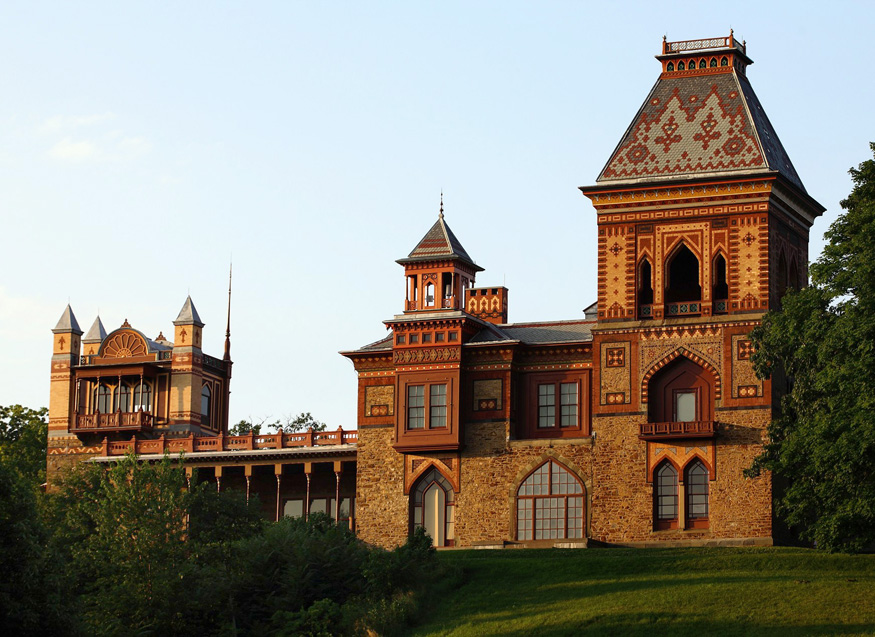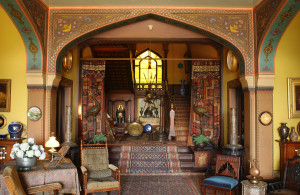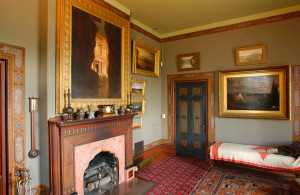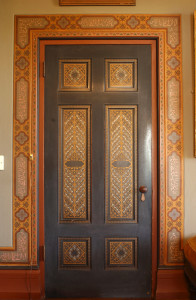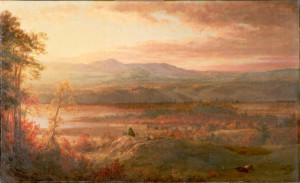By Andrea Valluzzo
HUDSON, N.Y. — Rising high above the Hudson River just south of the town of Hudson is a most incongruous sight. A Moorish mansion, seemingly plucked from a Middle Eastern city and dropped into rural Hudson Valley — an area better known for its colonial Dutch and English architecture — where for more than a century it has sat high on a hill, enjoying grand views in every direction for miles.
Now known as the Olana State Historic Site with its home and grounds open to visitors, Olana was built to be the home of renowned painter Frederic Church and his wife, Isabel, who first settled into a rural cottage here, named Cosy Cottage, following their wedding in the summer of 1860, seeking privacy for Frederic to paint undisturbed and plenty of room of raise a family.
After an 18-month trip visiting Europe and the Middle East, the Churches returned home in the fall of 1869. The couple had their cottage lower on the escarpment amid 100-plus acres, and Frederic’s studio was halfway up the hill but the grand views at the crest of the hill begged to be take advantage of. In his own words, Frederic deemed Olana’s views as “most beautiful and wonderful.”
Inspired by the architecture of Jerusalem, Damascus and Beirut, the Churches planned a home at the top of the hill that would integrate a Middle Eastern style and motifs. The architect Calvin Vaux was tasked with the project and he and Frederic worked closely for two years. Church likely designed much of the many ornamental elements in the home.
The family moved in during the fall of 1872, occupying the second floor while the first floor was being completed. Church worked on the house most of his life and in 1888, he began the studio wing containing guest rooms and a tower observation room.
Church lightheartedly described his house as “Persian, adapted to the Occident.” The home is very much of the Middle Eastern type, with a block of stone rooms built around a courtyard but befitting the Hudson Valley, there is a roofed court and the windows are glazed. While many details pay homage to the Middle East, Olana is in keeping with Nineteenth Century villas; thus it embodies both a Persian and a Western look.
The home is as noteworthy for its architecture as the original antiques, furnishings and decorative elements, most of which remain in the home today, not usually seen in house museums. The color scheme and lavish stenciling gracing the walls and ceilings are still vibrant today. From tapestries, rugs and bronzes to paintings, sculptures and objects, the home’s contents are mostly original and look as they did back in Church’s tenure here.
After Frederic’s death in 1900, the home passed to his son, whose wife, recognizing the home’s significance, was insistent upon keeping Olana as is until she died in 1964 at age 96. Her nephew, who inherited the estate, nearly sold Olana but for determined preservationists, who at the 11th hour secured funding to save the house and its contents. The group known as Olana Preservation is today The Olana Partnership and works together with the Olana State Historic Site to raise money for ongoing preservation of Olana. The Olana State Historic Site celebrated its 50th anniversary last month.
The grounds are wonderful to walk around and those keenly familiar with Church’s work will recognize spots where he painted some of his most well-known paintings. Art exhibitions are held at Olana from spring to fall and tours of the home — and landscape — are also offered. A new cellphone app is available for a self-guided version of the landscape tour.
Olana is at 5720 State Route 9G. For additional information, www.olana.org or 518-828-1872.

